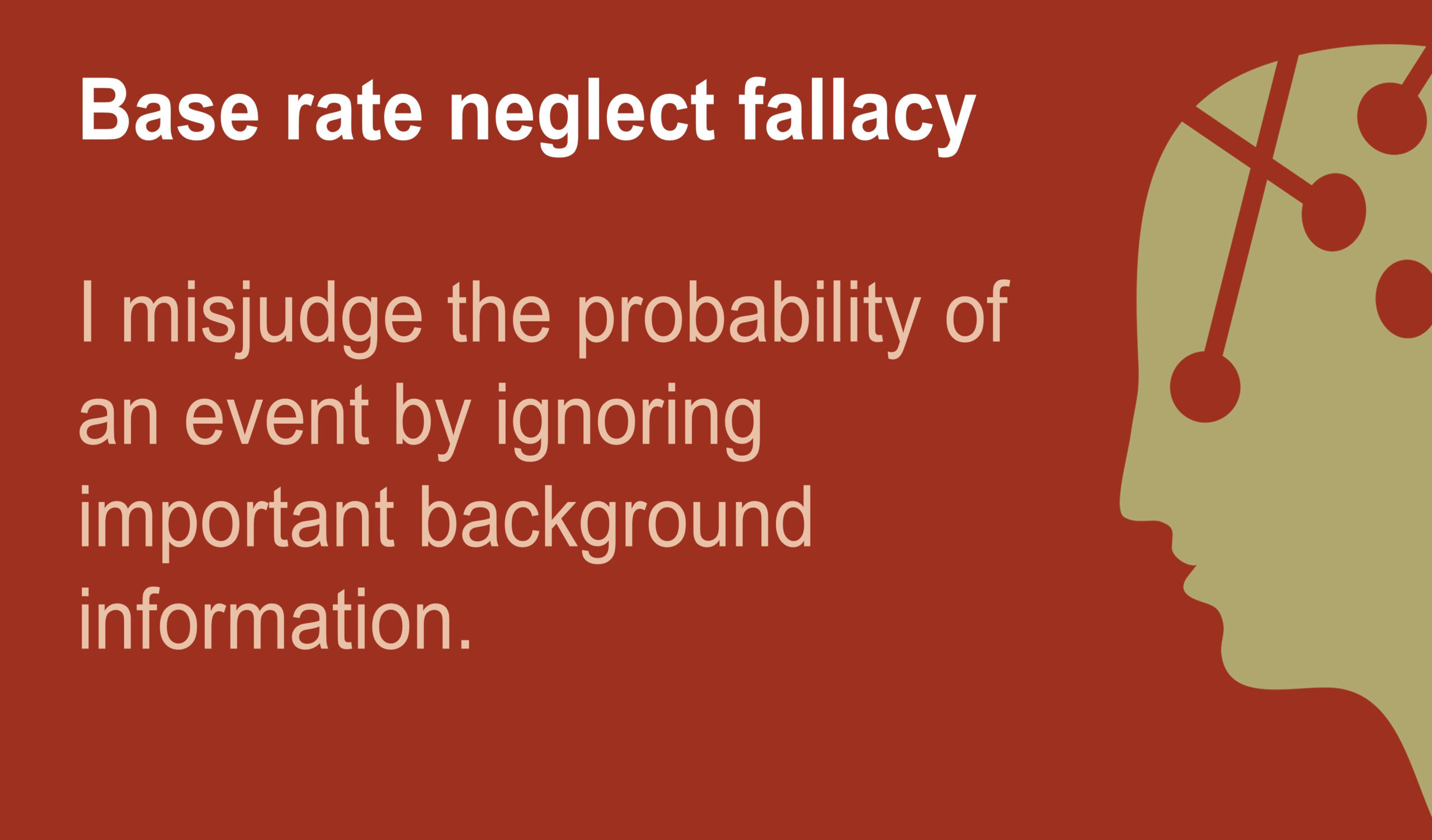Neglect of prior base rates is a cognitive bias that occurs when individuals place too much emphasis on specific information or characteristics and ignore the overall likelihood or base rate of an event. People often focus on individual details and neglect broader statistical probabilities.
Explanations:
Neglect of prior base rates is related to the human tendency to prioritize vivid and recent information over statistical probabilities. People may be drawn to specific details that capture their attention, leading them to neglect broader patterns or base rates.
Examples:
Stock Market: Investors may focus on the recent success of a specific stock without considering the historical performance of similar stocks in the market.
Medical Diagnosis: A doctor might overemphasize rare symptoms in a patient, leading to a misdiagnosis, while neglecting the likelihood of common medical conditions.
Criminal Profiling: Law enforcement might place excessive importance on specific characteristics of a suspect without considering the broader statistical patterns of criminal behavior.
Solutions:
Statistical Thinking: Promote statistical thinking and the consideration of base rates when making decisions or assessments.
Holistic Analysis: Encourage a holistic approach that integrates specific information with broader statistical context.
Bias Awareness: Raise awareness about the neglect of prior base rates and its potential impact on decision-making.
Consultation: Seek input from experts or resources that provide access to relevant base rate information.
Addressing the neglect of prior base rates involves recognizing the inclination to focus on specific details while overlooking broader statistical probabilities and actively promoting statistical thinking, holistic analysis, bias awareness, and consultation to make more informed decisions and assessments.
